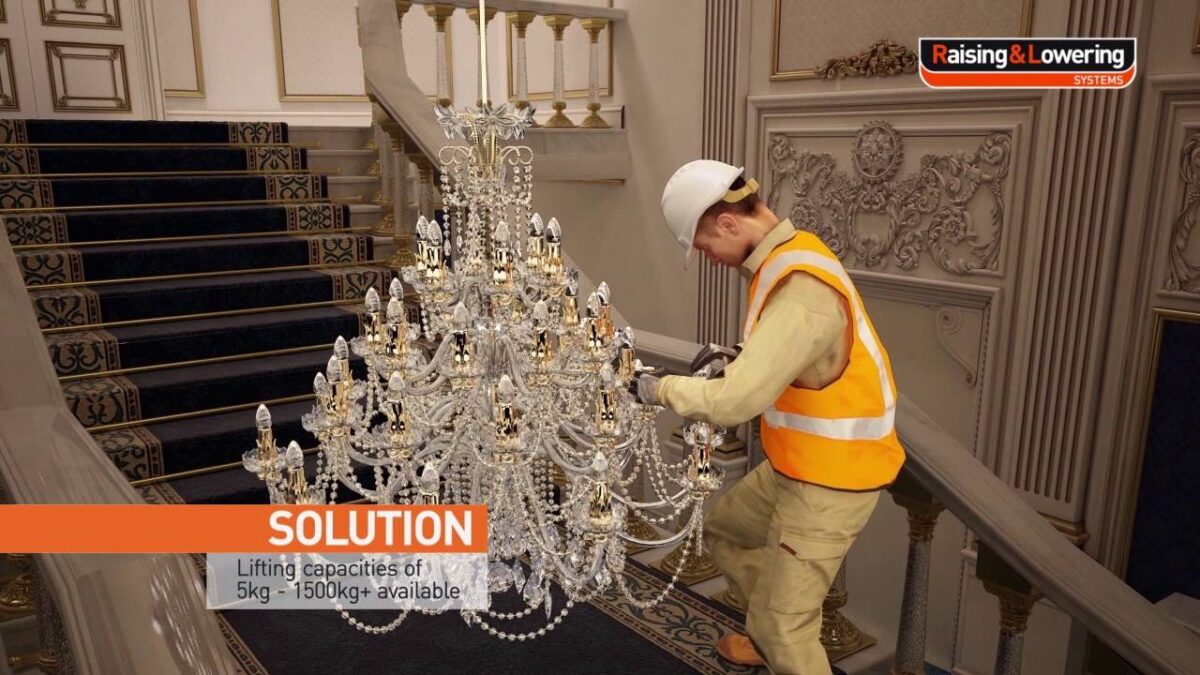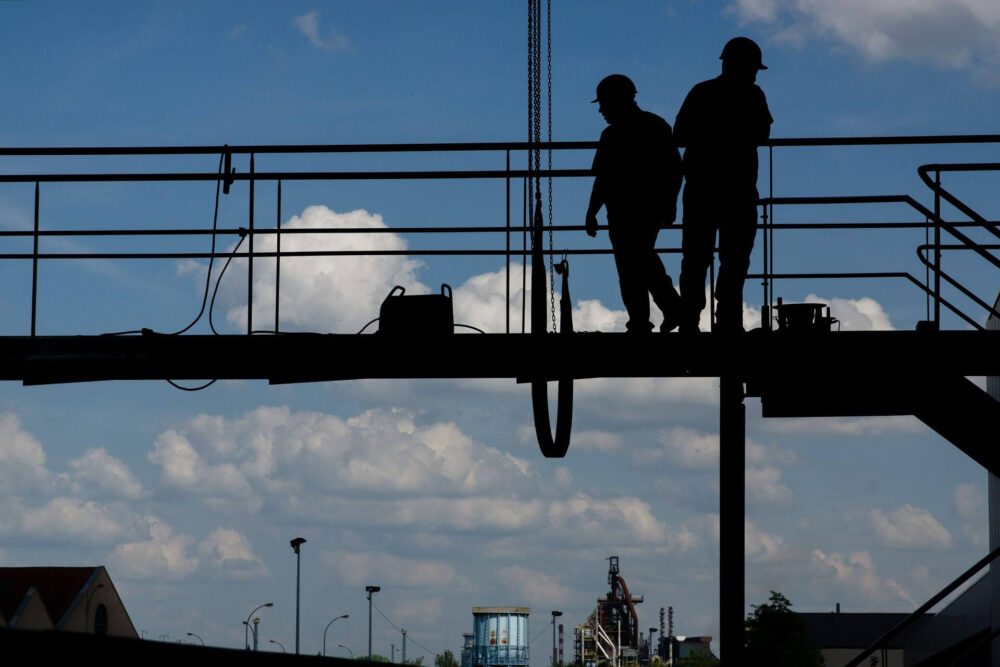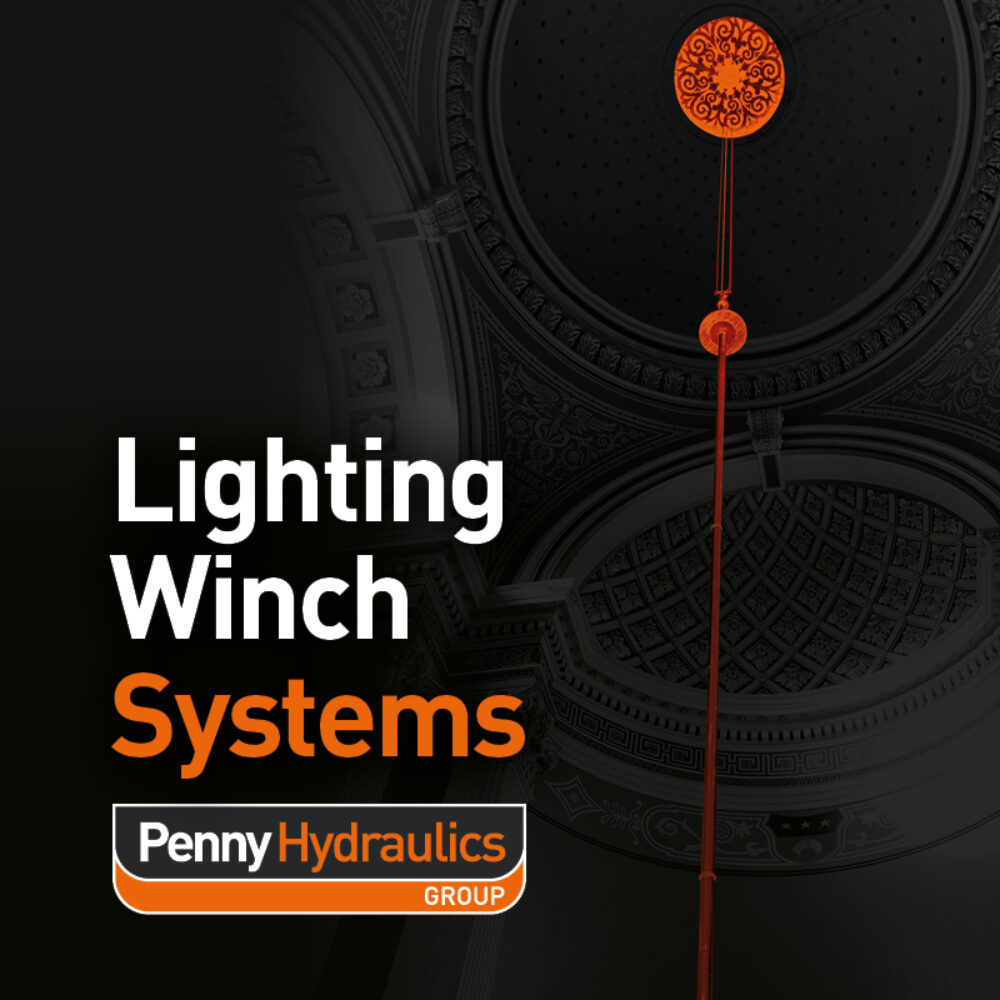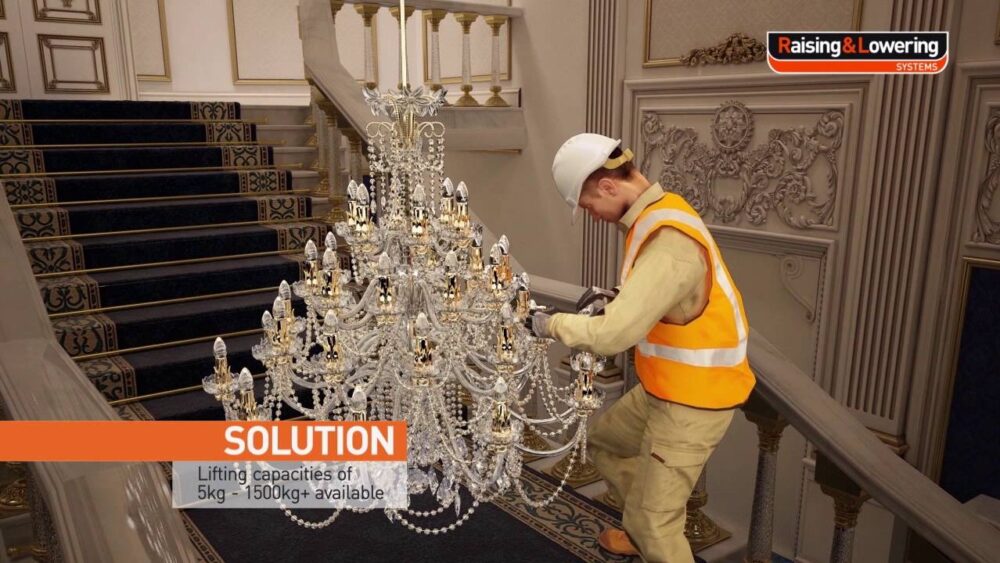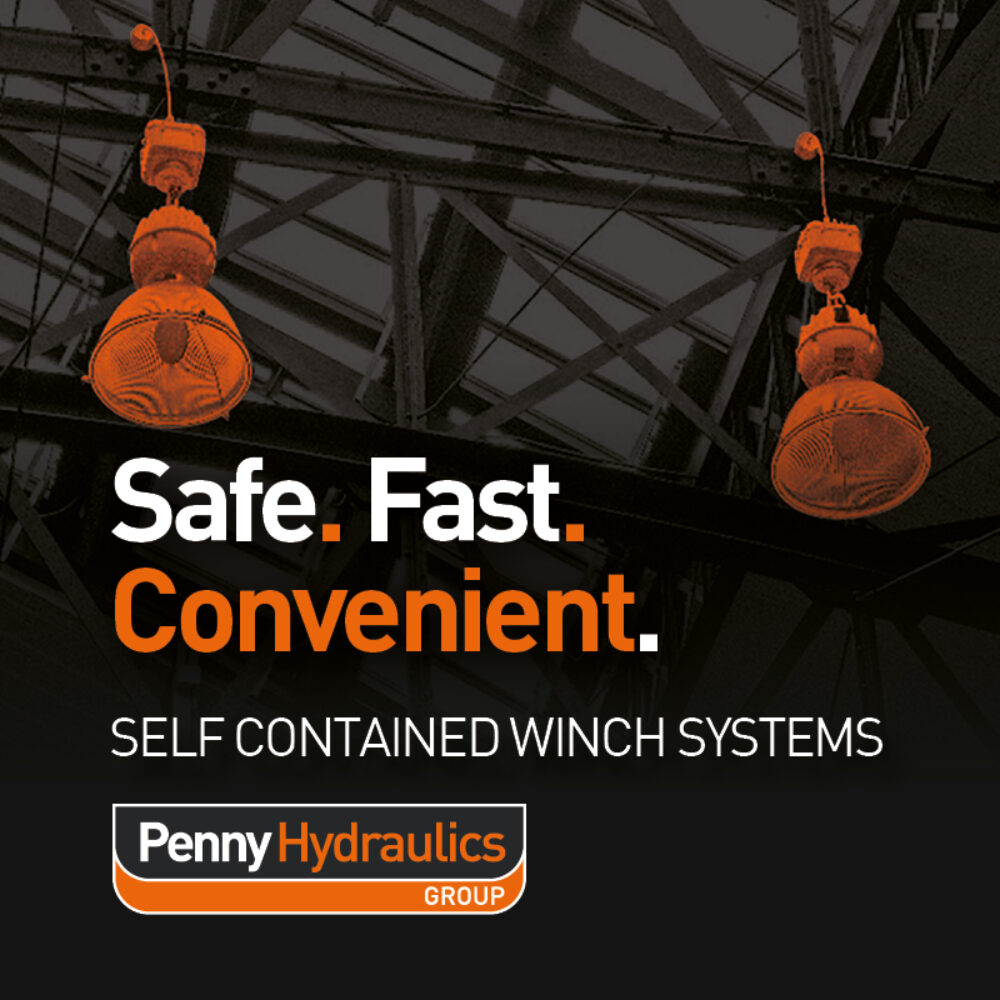Lighting Winch Systems
While electric lifting winches are used in a variety of applications, the most common is lighting maintenance. Warehouses, retail units, and manufacturing plants in particular, are responsible for the maintenance of hundreds, if not thousands of lighting fixtures.
High bay winch systems are now widely used for lighting maintenance in buildings with a high ceiling and roof such as schools, sports halls, factories, hangars, and airports. Ceiling-mounted and radio remote-controlled lighting winches reduce maintenance times, almost completely eradicating maintenance downtime. Lighting maintenance, which once would have taken at least half an hour per fixture to complete, can be completed in a matter of minutes with the use of an electric lifting winch.
High mast lighting winch systems are primarily used in an outdoor setting in high traffic areas such as airports, sports pitches, car parks, and freight terminals. Comprising a light pole to which several lighting fixtures are fitted, a lowering system is essential to fast and safe maintenance of high mast lighting. Where once a hydraulic lifting platform or high rope access engineers were essential to the maintenance of high mast lighting, a simple yet highly effective lighting winch provides fast and safe access.
For facilities and maintenance managers deciding which lighting winch system to buy, there are several essential requirements to consider:
- Minimum and maximum lowering distance
- Maximum lifting capacity
- Lighting power requirements
- Ingress protection rating in dusty and moisture-rich environments
- Mechanical or electrical operation
- Automatic isolation of electrical feed for overload protection
- Supply-only or installation service
- Equipment is tested and certificated to LOLER regulations
